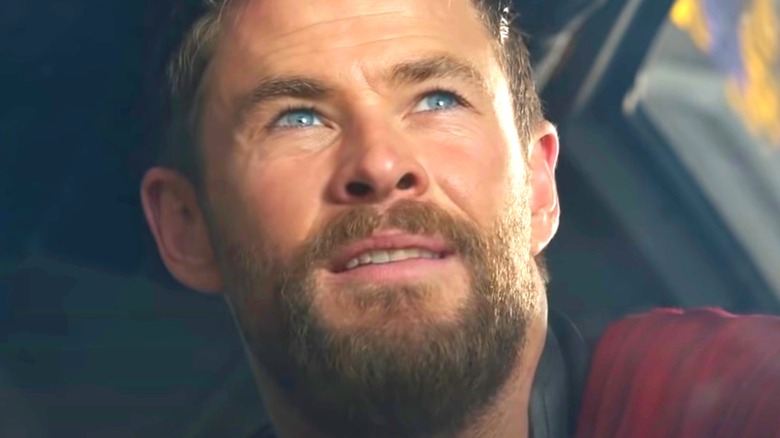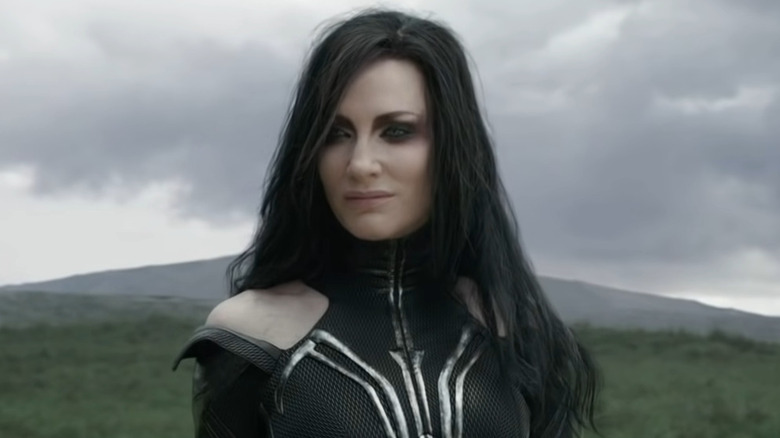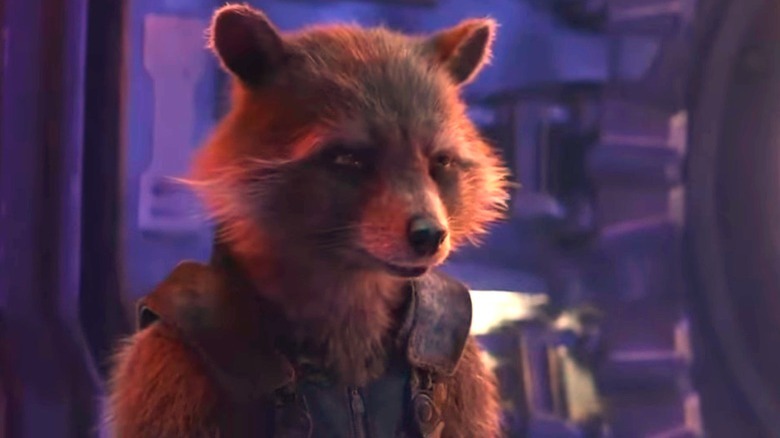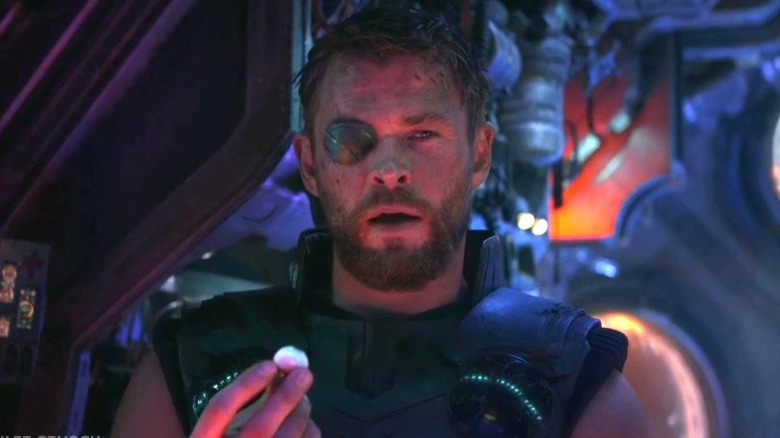How Did Thor Lose His Eye And How Did He Get It Back?
Of the "Big Three" superheroes in the Marvel Cinematic Universe (i.e. Iron Man, Captain America, and Thor), only one is left. Iron Man (Robert Downey Jr.) snapped himself into oblivion, and Captain America (Chris Evans) dipped out to experience the 1940s with his boo. Thor (Chris Hemsworth) is, symbolically, the last man standing of the old guard.
Thinking about Hemsworth's turn as the Norse god of thunder as "old" is the quickest way to feel old, but those are the breaks, kid. Time is cruel and takes no prisoners. It does take memory, though, and retaining all the information in the ever-expanding MCU can be difficult. With approximately 30 projects in the canon, something's gotta give.
What's more, Thor has had more canonical whiplash than any other prominent character, so he isn't exactly the easiest to follow. In one movie, he's an arrogant chauvinist, in another, he's a silly little himbo. The variations aren't just in his characterization, either — the poor guy's been put through Hel(heim). After all, how many Marvel characters have had an eye gouged out?
Don't worry, he got it back. It was a whole thing. For those who might not remember, consider this a hyper-specific Marvel-themed Quizlet, all about Thor's optical horror.
Thor's sister Hela partially blinded him in Ragnarok
In 2017's "Thor: Ragnarok," director Taika Waititi intentionally breaks Thor down and builds him back up as a different man. To do this, Waititi has characters assault the physical markers of Thor's personality and status. Hela (Cate Blanchett), Thor's secret older sister, comes out of the gate running when she shatters Mjölnir, Thor's magical hammer. Shortly thereafter, Stan Lee uses one of his final cameos to shred Thor's golden mane.
Almost every interaction Marvel's calendar model has in "Ragnarok" ends at his own expense, including the finale, in which he faces off against his emo sister one last time. The fight is barely a handful of minutes in before Hela lands a cutting blow ... directly across Thor's face. The slash cuts out his eye, leaving a bloody hole. To hammer the symbolism home, she comments on the injury, saying it makes him more like their father, Odin (Anthony Hopkins), who bore a similar wound. For clarity — in Hela's mind, this is a grievous insult, as Odin previously imprisoned her without the possibility of parole (she earned that sentence, but still).
Ultimately, Thor defeats her by dropping a cranky Surtur (read: giant, angry fire demon who is literally destined to do bad things) in her lap. He destroys the whole of Asgard in the process, but he gets the job done. After all that, Thor ends "Ragnarok" with a cool Asgardian eyepatch, a physical trophy, and a fashionable testament to his emotional growth and personal sacrifice. When the credits roll, he is on track to becoming the king his father always hoped he would be...
Rocket Raccoon provided Thor a cybernetic replacement eye
... Which 2018's "Avengers: Infinity War" then immediately throws away. Thanos (Josh Brolin), an intergalactic warlord with considerable magical firepower, uses Thor's ship as a warmup to assaulting Earth. Within the first few minutes of the movie, Thanos humiliates Hulk (Mark Ruffalo), kills half of the surviving Asgardians, and suffocates Thor's brother Loki (Tom Hiddleston). Desolate and damaged, Thor is rescued by the Guardians of the Galaxy, an intergalactic team of antiheroes.
Rather conveniently, one of the Guardians has exactly what Thor needs at that very moment. Rocket Raccoon (Bradley Cooper) feels sorry for the one-eyed, vengeful god, so he offers him a gift — a new, cybernetic eye to replace his empty socket (Rocket has a lot of spare parts, it's his running gag in the MCU), which Thor casually pops into his face with practiced ease. Just like that, his sight is 20/20 again and the cool eyepatch aesthetic is gone, and the whole eye debacle is never mentioned again. And that's that, really. It's pretty simple. Thor was tarnished by angry family (who isn't?) and abetted by a friendly cyborg rodent.
Here's where the speculation begins though, because it's a bit weird that such an important bit of visual symbolism is removed so quickly, isn't it? That's not an overdramatization, either, because "Thor: Ragnarok" and "Avengers: Infinity War" were released back to back. So, what happened?
Thor's story is suspiciously cyclical
It's important to note that Thor's eye isn't the only physical marker of character progression that is immediately rolled back after "Ragnarok." In "Infinity War," Thor forges Stormbreaker, a magical ax, from a dying star and the dismembered arm of a sentient tree (don't ask). In 2019's "Avengers: Endgame," the finale to the "Infinity Saga," he regrows his hair. That last film also depicts Thor's severe depression and emotional eating as comical, thereby negating his leadership journey and infuriating audiences everywhere. Without spoiling too much, 2022's "Thor: Love and Thunder" begins Thor's journey with an exercise montage and returns him to a state of mental self-exploration, with Korg (Taika Waititi) narrating the cyclical nature of his story. So, what's the most likely cause of the push and pull?
The first probable cause for the differences is one of clashing tonality. Taika Waititi's films are more based in deprecating humor at Thor's expense than previous iterations of "Thor," and it seems possible that this did not wholly align with what directors of the group films desired to achieve. It also seems possible that the eyepatch simply presented too many practical limitations on the character and actor. In an interview with Cinema Blend, Chris Hemsworth admitted that trying to use the physical prop was "ridiculous," and that he much preferred the CGI option that they ultimately went with. As it turns out, giving Thor a new eye may just have been an example of behind-the-scenes ease taking precedence over story.
With "Thor: Love and Thunder" finally out, it seems clear that Thor won't be regaining his eyepatch anytime soon, so that, at least, is probably a closed loop.



